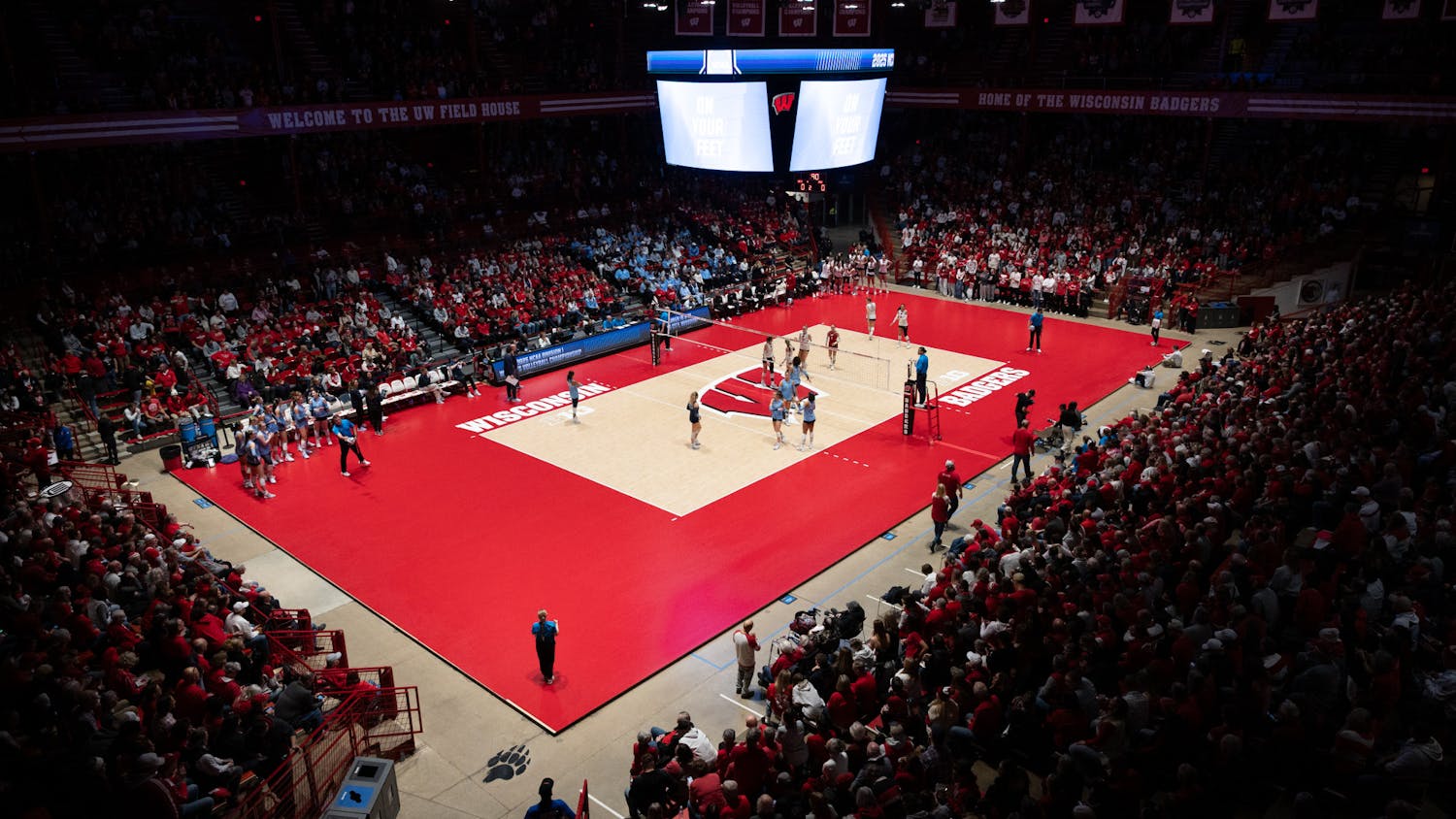Jonathan Tsipis was introduced as the first male head coach of the Wisconsin women’s basketball team March 31. But when asked if gender affected the hiring, Athletic Director Barry Alvarez responded succinctly.
“It didn’t come up at all,” Alvarez said. “I wanted to hire the best coach we could hire. And I think we did that.”
And while such a sentiment seems logical, Alvarez’s response is more complex than it lets on. This is by no means discounts Tsipis, who is a good hire for UW due to his past successes, but prior perceptions often shape hires.
That’s not to claim that Alvarez is sexist for hiring a proven man to coach a struggling women’s program, but in Vivian Acosta and Linda Jean Carpenter’s 2014 study, “Women in Intercollegiate Sport,” Acosta and Carpenter find women ADs bring a higher percentage of female coaches into the department. Conversely, when the AD is male, there is a higher percentage of male coaches at the university.
This translates to the stark difference in the ratio between male coaches and female coaches. Acosta and Carpenter find there are 5,427 male head coaches of women’s teams compared to 4,154 female head coaches of women’s teams.
Those troubling statistics need to change, but to increase the amount women getting and maintaining jobs coaching women’s teams, there first needs to be more female athletics directors.
ADs in both men’s and women’s sports have preconceptions of what coaches look like, often looking for candidates who are similar to themselves. This concept is more broadly called “cultural fit.”
Lauren A. Rivera, a professor in the management & organization department at Northwestern, writes in her paper “Hiring as Cultural Matching: The Case of Elite Professional Service Firms,” that hiring people “is also a process of cultural matching between candidates, evaluators, and firms. Employers sought candidates who were not only competent but also culturally similar to themselves in terms of leisure pursuits, experiences, and presentation styles.”
Acosta and Carpenter’s 2014 finding supports Rivera’s cultural fit theory—men are more likely to hire male coaches for women’s jobs, and women are more likely to hire female coaches for women’s jobs.
Additionally, the number of administrators in athletic departments is relatively low, which leads to a more homogenous cultural fit, as 11.3 percent of NCAA athletic programs did not have a female in their administrative department as of 2014. And while this data doesn’t necessarily cause or shape every hiring, the lack of female representation in athletic departments certainly doesn’t help any female coaches get a head coaching job.
But contrary to Rivera’s study, in recent years when female athletics directors were hired, they did not mirror the male-dominated culture of the program they took over. That’s because in the case of Sandy Barbour, the AD at Penn State, and Julie Hermann, the recently fired AD at Rutgers, the institutions they took control of were looking to create an entirely new culture.
As Patti Phillps, the CEO of the National Association of Collegiate Women Athletics Administrators told The Philadelphia Inquirer’s Frank Fitzpatrick, “When bad things happen, that’s when leadership looks at each other and says, ‘Ok, we need to go in a different direction.’ And the easiest way to think about going in another direction is to hire a woman.”
Rutgers did just that in 2013 when it hired Hermann. She was hired after former Rutgers basketball coach Mike Rice was found verbally abusing his players. In 2014, Barbour got the Penn State job in the wake of the Jerry Sandusky scandal.
Hermann was fired last November after a brief two-and-a-half-year stint on the job. Her absence left only Barbour, Deborah Yow of NC State and Heather Lyke of Eastern Michigan University as the only female athletics directors in the FBS.
Not surprisingly, the athletics directors left in the FBS are almost all male, mainly because football is often times the most important program in many athletic departments.
Fitzpatrick, in his aforementioned story in the Inquirer, posits that the common stereotype that women don’t know both the business and culture of football prevents women from getting more AD jobs.
This alleged lack of familiarity with the workings of a football program is an oft-speculated reason why women don’t obtain more AD jobs.
In the eyes of Keith Sargeant of NJ.com, the chief reason why Hermann was asked to resign this past fall was because of her problems managing the football program.
Even if men’s basketball might be the most successful program at UW, there is no debate that football is the school’s most profitable program. Alvarez was of course once the football coach at UW himself. Football drives the narrative in Madison.
That’s not likely to change anytime soon. And as a result, the gender statistics of the UW-Madison athletic department likely won’t change much either.
At Wisconsin, in Fall 2015, five of the 12 coaches of women’s teams were female. That number has only decreased since Tsipis’ hire.
That means to increase the number of female coaches at Wisconsin and other collegiate programs, universities must first create a better cultural fit. To do this the solution is simple: hire more female athletics directors.






